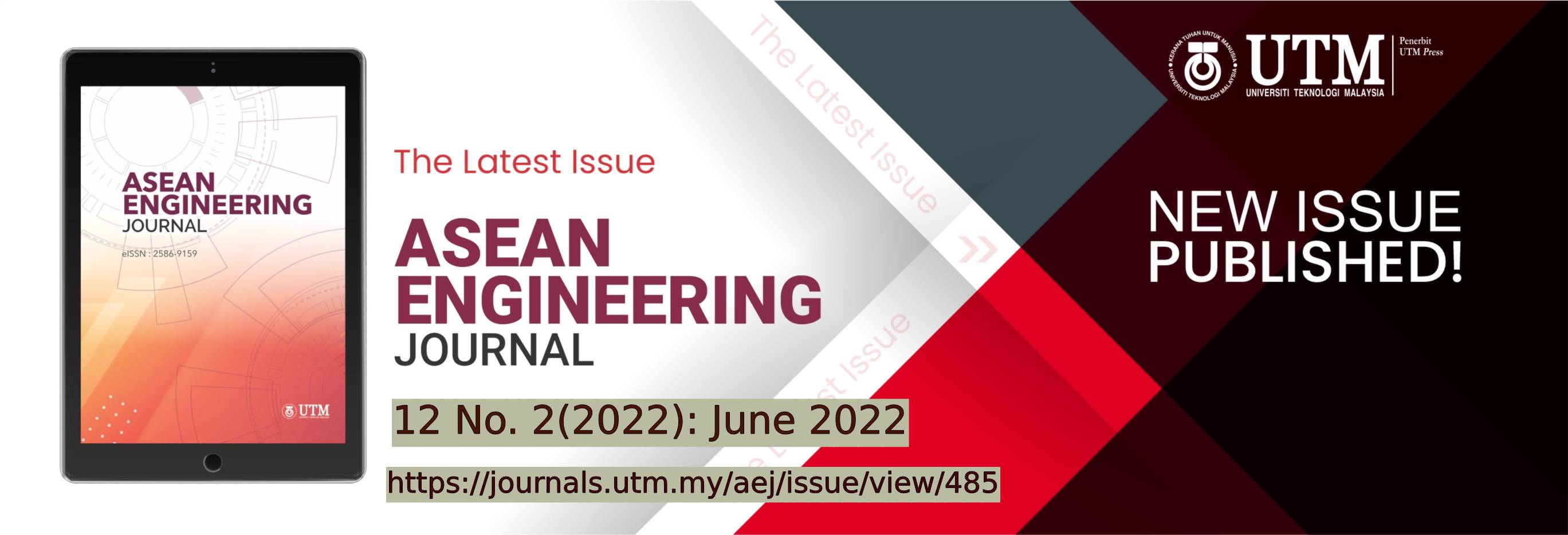PREDICTING OF REFRIGERANT LEAKAGE IN A CONDITIONED ROOM: A NUMERICAL STUDY LEAKS DISTRIBUTION R-32 REFRIGERANT IN A/C SPLIT UNIT
DOI:
https://doi.org/10.11113/aej.v12.16499Keywords:
CFD, Difluoromethane, Distribution, ANSYS Fluent, A/C split, Hydrocarbon Refrigerant, CFD ANSYS Fluent, Difluoromethane, Distribution, AC Split, LeakageAbstract
Hydrocarbon Refrigerant R-32 called difluoromethane is one alternative solution used for Air Conditioning (A/C) unit split, but the weakness is flame property. This study investigates and analyzes flammable refrigerant difluoromethane distributions in the room affected by the A/C unit's leakage. It discusses the distribution of flammable refrigerant R-32 (difluoromethane) in an air-conditioned room. The simulation uses three variations of mass flow rate (leakage) and three airflow rate variations: low, medium, and high cold airflow velocity. Numerical calculations are used in CFD ANSYS FLUENT software with a model developed by Species Transport, SIMPLE algorithm, solver using pressure-based, mesh type is the dominant quadrilateral (rectangle). Turbulent modeling uses K-Epsilon standards. CFD analysis in the transient system condition results from numerical simulation, indicating that the leak will run out after 180 seconds with 0.005 kg/s (0.5 m/s). The moderate leak rate of 0.002 kg/s for R-32 is 450 seconds (7.5 minutes). The slower 0.001 kg/s with 0.1 m/s airflows for the R-32 ends after 900 seconds (15 minutes). The air and flow mass flow can affect the distribution and directly difluoromethane to the conditioned room. The effect of airflow rates and positioning holes in the concentration leaks is also analyzed when the unit's refrigerant leak is indoors as the air conditioner works.
References
Clodic D. 2010. Low GWP Refrigerants and Flammability Classification K06. International symposium on next generation air conditioning and refrigeration next Technology.2010. February 17-19 Tokyo. Japan.
Yu-nong Li Jun-jun Tao, Yu-chon Han Xue Han. 2014. Numerical and Experimental Study on the Diffusion Property of Difluoromethane (HFC-32) in leakage. 71: 34-43.
Wang Zhang and Zhao Yang Jin Li. 2013. Research on the Flammability Hazards of Air Conditioner using Refrigerant R-290. 36: 1483-1494
Quangyi Liu and Hui Zhang Yi Liu Hong Huang. 2013. Influencing Factors of Flammable Refrigerants Leaking in Building Air Conditioning System. 62: 648-654.
Yuebin Wu and Enlu Yu Ying Xu. 2007. Simulation and Analysis of Indoor Gas Leakage 1267-1271.
Ryuichi Nagaosa and Aute C V Radermacher R. 2012. A Risk Assessment for Leakages of Flammable Refrigerant into a Closed Space 2240 : 1-10.
Kataoka,O and Yoshizawa, M Hirakawa. 2000. Allowable Charge Calculation Methode for Flammable Refrigerants. 506: 383-390.
A. Elatar et al., “Evaluation of flammable volume in the case of a catastrophic leak of R-32 from a rooftop unit,” International Journal of Refrigeration. 91: 39–45, 2018, doi: 10.1016/j.ijrefrig.2018.04.024.
Goetzler, B., Guernsey, M., Faltermeier, S., and Droesch, M., 2016. AHRI Project No. 8016: Risk Assessment of Class 2L Refrigerants in Commercial Rooftop Units. Prepared for Air- Conditioning, Heating and Refrigeration Institute by Navigant Consulting, Inc.
[10] Daikin E- Catalog of specification Daikin. Daikin Industries. Tokyo- Japan. 2022. Source: https://www.daikin.co.id/en/semua-e-catalogue
ANSYS FLUENT v13. 2010. Ansys Inc, Theory Guide.
Popovici CG, 2017. HVAC system functionality simulation using ANSYS-Fluent. 112: 360-365.
H Haris. 2015. Numerical simulation of natural gas leakage from pipelines. 5: 893-896.
L. Jia, W. Jin, and Y. Zhang, 2017, “Experimental study on R-32 leakage and diffusion characteristic of wall-mounted air conditioners under different operating conditions,” Journal of Applied Energy, 185(81172625): 2127–2133, doi: 10.1016/j.apenergy.2016.01.041.
Nagaosa, R. S., 2014. A new numerical formulation of gas leakage and spread into a residential space in terms of hazard analysis. Journal of Hazardous Materials, 271: 266-274.
Colbourne, D., and Suen, K. O., 2003. Equipment design and installation features to disperse refrigerant releases in rooms—part I: experiments and analysis. International Journal of Refrigeration, 26(6): 667-673.
R Muliawan, Effect of Leakage on Refrigerant Distribution in Air Conditioned Room Using Propane as Working Fluid," in Proceding ICIEVE UPI, 2020.
Jia, L., Jin, W., and Zhang, Y. 2017. Experimental study on R-32 leakage and diffusion characteristic of wall-mounted air conditioners under different operating conditions. Applied Energy, 185(2): 2127-2133.
Moran, M., J, Saphiro,"Fundamentals of Engineering Thermodynamics," Jhon Wiley & Sons, Inc. : London, 2011.







